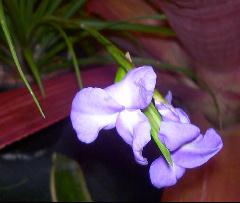
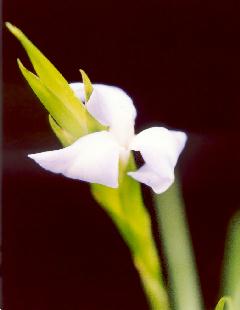
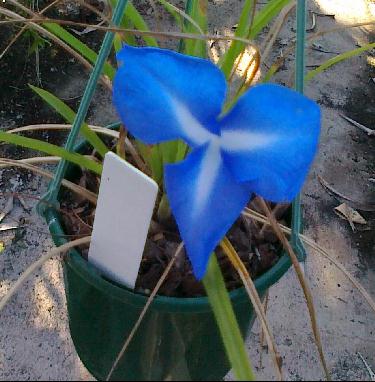
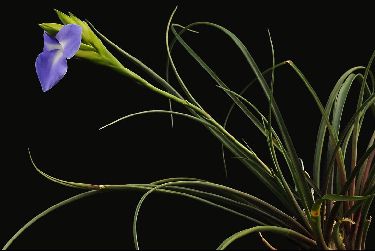
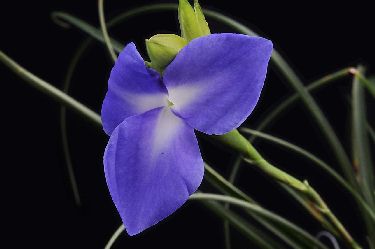
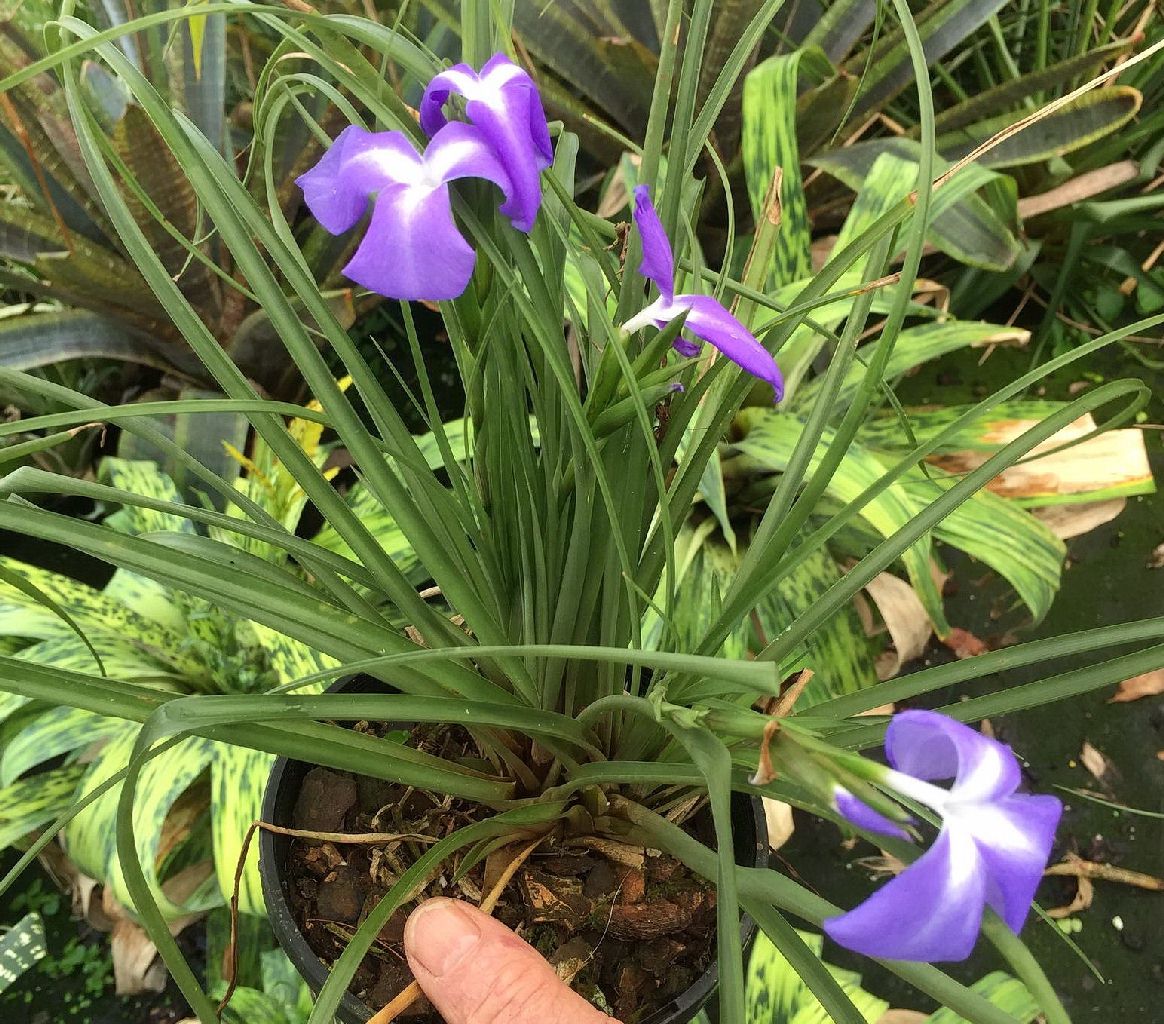
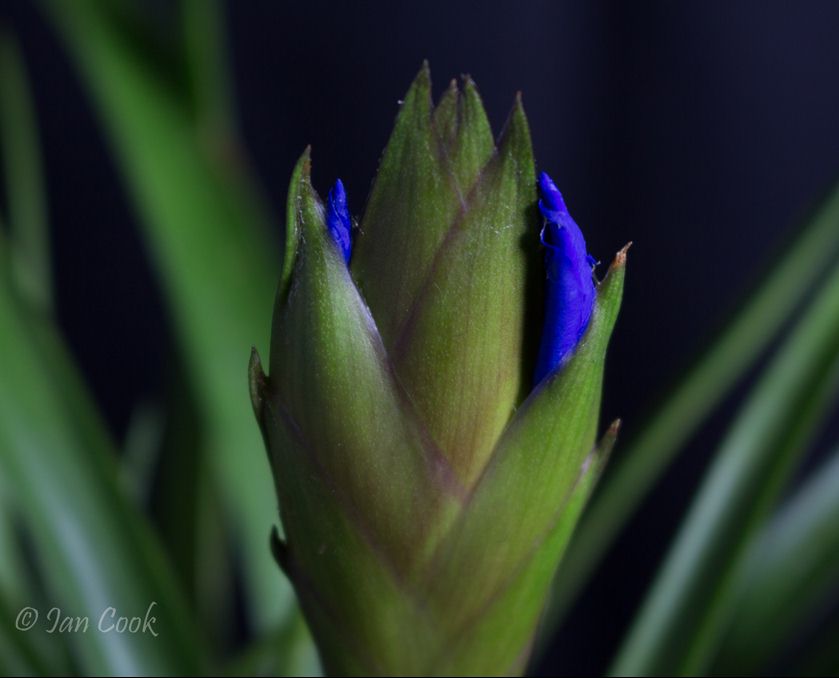
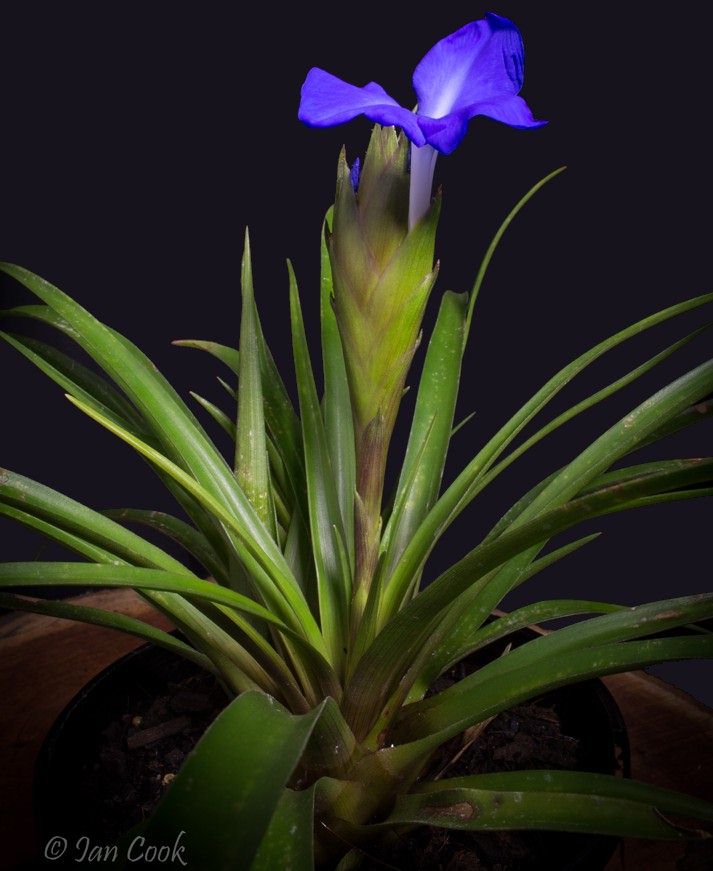
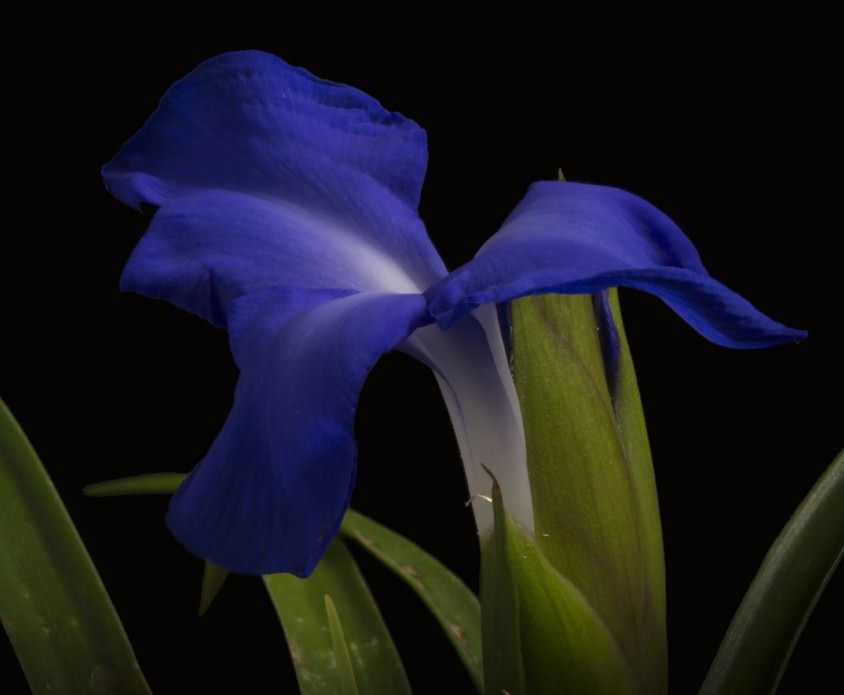
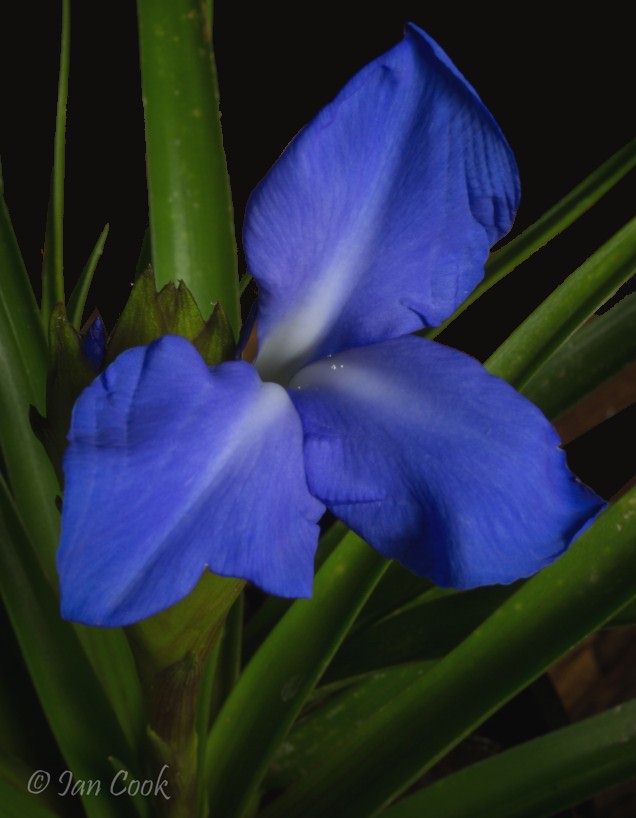
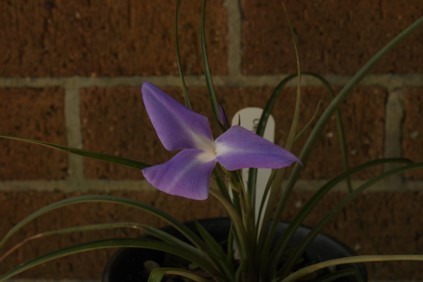
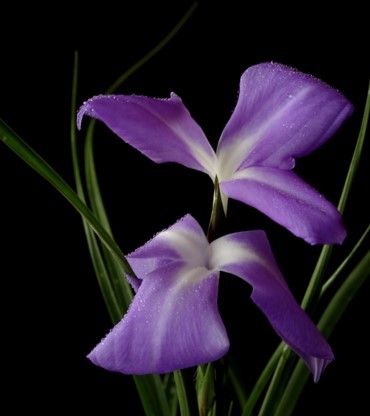
| . Name | . Scape | . Spike | . Axis visible anthesis | . Petal | . White centre | . Floral bracts nerved |
| . anceps | . short | . 10-15cm x 5.5cm | . no | . 5.5cm long narrow and spreading | . no | . no |
| . cyanea | . short | . 16 x 7cm | . no | . 8cm long wide and spreading | . no except v. tricolor | . no |
| . lindenii | . long | . 20 x 5cm | . no | . 7cm long wide and spreading | . yes | . yes |
| . pretiosa | . long | . 20 x 11cm | . yes | . 8cm long wide and spreading | . yes | . very strong |
| . umbellata | . long and thin | . 6 x 3cm | . yes | . 7cm long wide and spreading | . yes | . yes |
“The name, "Tillandsia lindeni", sets a new high for confusion in the Bromeliaceae. As used here it applies to the "long-scaped” species first noted by Regel, and not to the "short-scaped" species that E. Morren described as new under the same name. Regel, after publishing his species twice as "lindeni," for no explained reason changed to "lindeniana" for his third and best-known description, and a year later proposed "morreniana" as a new name for Morren's species to avoid duplication of the "lindeni" he now disowned. Morren, not to be outdone in weird reasoning, proceeded to make Regel's earlier species a variety "regeliana" of his, the later, "lindeni."
Regel and Morren argued back and forth in print over the names and status of their two finds and were later further confused by Andre. Meanwhile, the horticultural writers, struck by the great beauty of the plants, published a profusion of notes and illustrations without stopping to verify names and identities. In several instances they managed to illustrate "lindeni" of Regel while labeling it "lindeni" of Morren.
Regel contented himself in arguing the priority of his name and the specific distinction of the two entities involved. Morren considered them varieties of the same species and went on to add further varieties, still under the wrong "lindeni," with the paradoxical result that three of them must now be transferred from "lindeni" of Morren to "lindeni" of Regel, since the two species were founded independently, and on different types.
Again we meet confusion in the battle of Tillandsia lindeni. Both species were collected by Wallis and, as reported by Regel, one came from Zozoranga in Ecuador and the other from Huancabamba in Peru. Morren claimed that they were but a single collection, but later collections would refute this and also indicate that Regel had reversed species and localities. Actually, all collections since the types indicate that the species with the long scape is Peruvian and that with the short is Ecuadorian.
The earliest specimen of Tillandsia lindeni to be illustrated was few-flowered and rather resembled T. umbellata, but later more vigorous plants had larger inflorescences that contrast sharply with that species.”
After all this investigation you would have thought that Lyman Smith would have known all there was to know about this group but we find that his T. cyanea var. elatior is now treated as a T. pretiosa.
Let us also look at THE chart to see the differences between T. lindenii and T. pretiosa. The T. pretiosa spike is twice as long as it is wide, in fact quite a fat fellow, and in the photograph by Werner Rauh in BSIJ #6 1984 we clearly see the axis at the time of actual flowering. The photograph from Jose Manzanares is not as clear cut but it does show the non-flowered bracts at the top of the spike much closer together. If we look at the photograph on page 209 in Baensch's Blooming Bromeliads (1994) we will see no changes in the positions of the floral bracts and a somewhat skinny spike suggesting this is T. lindenii or a hybrid of it.
If you have anything that can add to our knowledge of this group please let us know.
Key from Mez 1935
b) Inflorescentia densa, optime flabellata.
l. Bracteae sepalis permulto longiores; petalorum laminae ellipticae.
- § Bracteae ad 0,125 m longae ==> 332. monstrum
- §§ Bracteae ad 40 mm longae ==> 333. anceps
2. Bracteae sepalis paullo longiores vel ea subaequantes; petalorum laminae maximae, suborbiculares.
- § Inflorescentia multiflora; flores sibi superpositi.
- - + Sepala rotundata
- - - ° Scapus elongatus; petala ad faucem albo-maculata ==> 334. Lindeniana
- - - °° Scapus abbreviatus; petala aequaliter cyanea ==> 335. Morreniana
- - ++ Sepala acutissima ==> 336. pretiosa
- §§ Inflorescentiae pauciflorae flores juxtapositi adspectu subumbellati ==> 337. umbellata